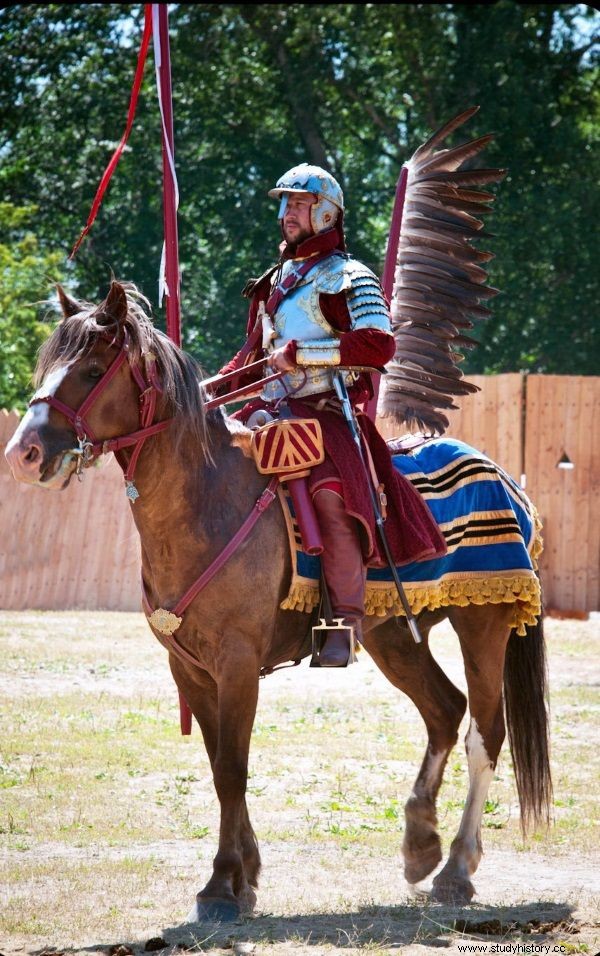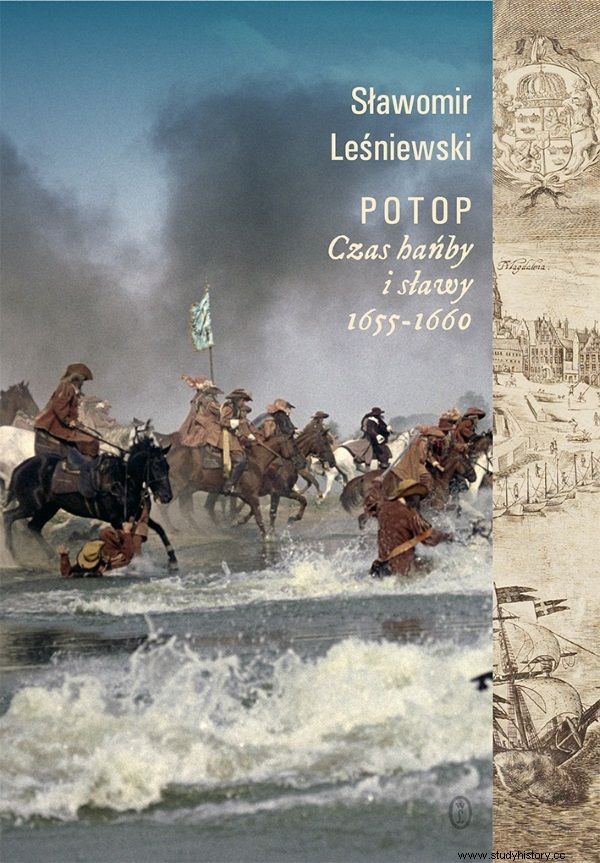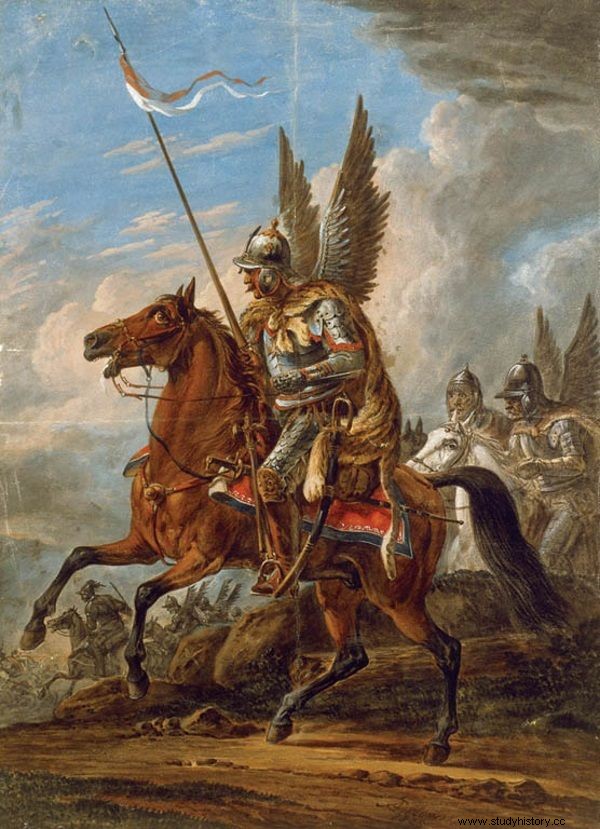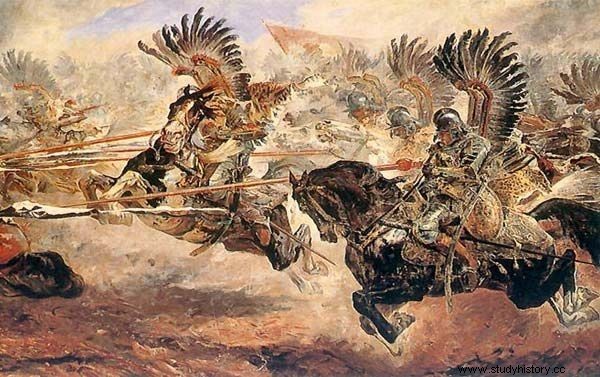At the beginning of the 17th century, we rebuked the Swedes for her cause. Half a century later, however, the hussars were of no use to us. The country fell prey to the enemy, and the king was forced to flee. Why didn't the winged knights protect us?
In some publications about the years of the Swedish Deluge, you can read that in the mid-17th century, hussars were only an outdated Polish cavalry. Apparently she was afraid of cannon fire. In those days, historians argue, the cavalry was a thing of the past. It was the Swedes who put on foot that were more modern.
Meanwhile, it was not like that at all. Even King Charles Gustav himself appreciated the importance of hussars. At the end of 1655, he took a hussar banner led by Aleksander Hilary Połubiński. And on the second day of the battle near Warsaw in 1656 he ordered his men to avoid a general fight with the hussars ...
In the territory of the Republic of Poland, it was also impossible to properly conduct effective operations without cavalry. It was an extremely vast country and, in addition, poorly urbanized. The Swedes gradually became aware of this as the following months of the war passed. And during the Flood, the proportion of infantry and cavalry in their army changed in favor of the latter.

Historical reenactor recreating a hussar. (Photo published under CCA SA 3.0 license, author:[email protected]).
Despite this, during the Swedish invasion, the hussars did not add a triumph like Kłuszyn or Kircholm to the golden book of their victories. Why?
1. Hussars were not enough
First, the hussars were scarce. A professional soldier in the Polish-Lithuanian Commonwealth had to arm himself at his own expense. His source of livelihood was his wages that were always in arrears, or ... robbery . Especially belonging to the hussars meant an incredibly expensive investment. And the nobility was poorer, so if any of you wanted to lead a soldier's life, he often opted for cheaper formations.
In addition, the Commonwealth from 1648 struggled with the rebellion of the Cossacks, supported by the Tatars for a long time. As if that was not enough, in 1654 the Russian army invaded the country. Hussars and other soldiers died in numerous battles. The defeat at Batoh, suffered in 1652 in the fight against the Cossacks and Tatars, turned out to be particularly severe. The Cossacks bought Polish prisoners of war from their allies and murdered them. Thousands of soldiers fell victim to them. Among them was the flower of the Polish military officers and many hussars.

As a result, the ranks of the hussars significantly decreased. The hussars at the time of the Flood numbered no more than 1000 horses - reminds the historian Paweł Skworoda. On the other hand, according to the calculations of another researcher, Andrzej A. Majewski, in the years 1655-1659 in the crown army hussars reached a maximum of 1108 horses, and in the Lithuanian one - 1020 horses .
2. A copy was missing
Second, a copy was missing. This problem was noticed in the 17th century by Andrzej Maksymilian Fredro. P As long as there is a copy of the hussar, there will be a Pole in the field; since the copy will perish, the Pole's virtue will perish - he stressed. In fact, many copies were broken during the charges, and it was extremely difficult to fill in the gaps during the campaign.
How was it going without this important piece of equipment? The lack of these trees meant that often captors were forced to put in a hussar style in the camp, instead of hussar style - wrote the military historian Mirosław Nagielski. "Paternal" meant:pistol in hand.
3. There was no support
Third, the hussars lacked the support of other units during their skirmishes with the enemy. Although the hussars provided an advantage on the battlefield, help from additional troops was necessary . Especially that the number of the formation gradually decreased ...

Hussar in the image of Aleksander Ostrowski (1777-1832).
The lack of soldiers was clearly felt during the Battle of Warsaw in 1656. Approximately 900-1000 hussars then collapsed on the 18,000 Swedish-Prussian army, grouped in three lines. They broke the first, mixed the second, and… they didn't get support. All because the remaining Polish nobility under other signs did not obey the order of their monarch, Jan Kazimierz, ordering the hussars to assist. This is how Nagielski described the situation:
The king, while preparing the banners for battle, at the same time held the office of sergeant, quartermaster and ordinary soldier, running everywhere with his saber in hand, asking some, threatening the other, and sometimes so tenderly speaking to them that some of them had tears in their eyes.
The desperate king nearly took his broadsword off the head of one of the cowardly standard bearers!
4. The Swedes knew how to choose the battlefield
Fourth, hussars performed best in the open field. The importance of the obstacles in the way of driving cannot be overestimated - wrote Radosław Sikora, specialist in the history of hussars. It was them, and not the firepower of firearms, that were the cause of the breakdown of the determined hussars' charges .
The battle of Kłecko, fought with the Swedes in 1656, shows how important the terrain was. The enemies were protected by a wide ditch. Even 6 charges of the Hussar banner did not bring any results. As one of the participants in the battle concluded, the cause of the defeat was that we had to stumble in the wrong place .

`A charge of hussars armed with lances.
Ultimately, the best way to defeat the invaders from Sweden turned out to be a "pulled war". Its master was Stefan Czarniecki. This is what military historian Robert I. Frost commented on the outcome of the war:
The Swedes won almost every major battle during this war, but in the end it didn't do much for them. The war in the conditions of Eastern Europe was rather a matter of numerous clashes and skirmishes between small units .
Buy the book with a discount at Empik.com:

